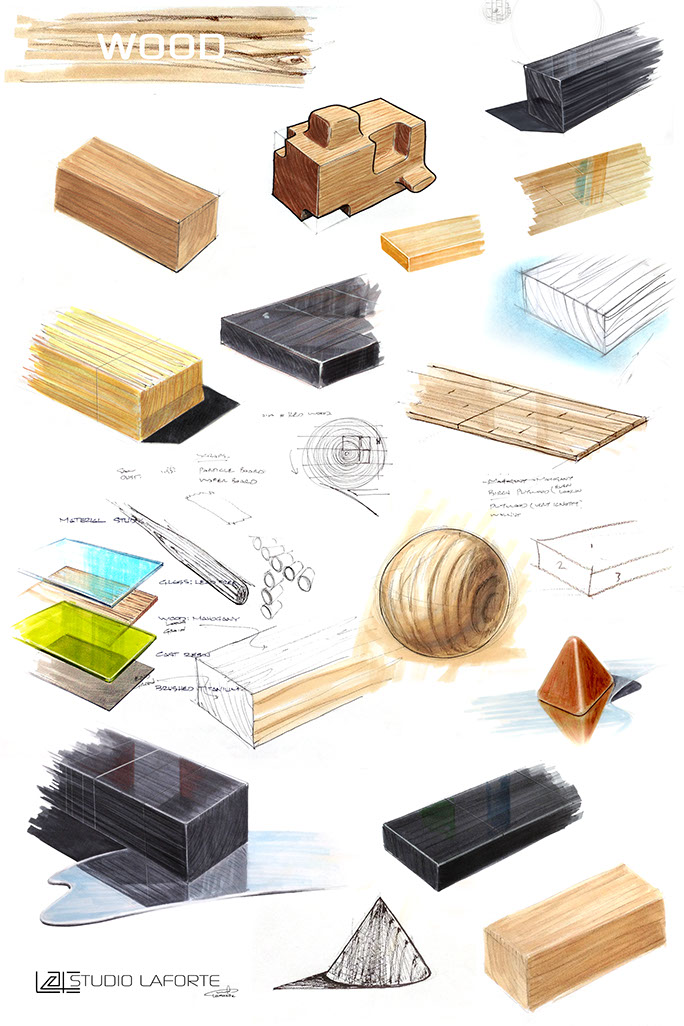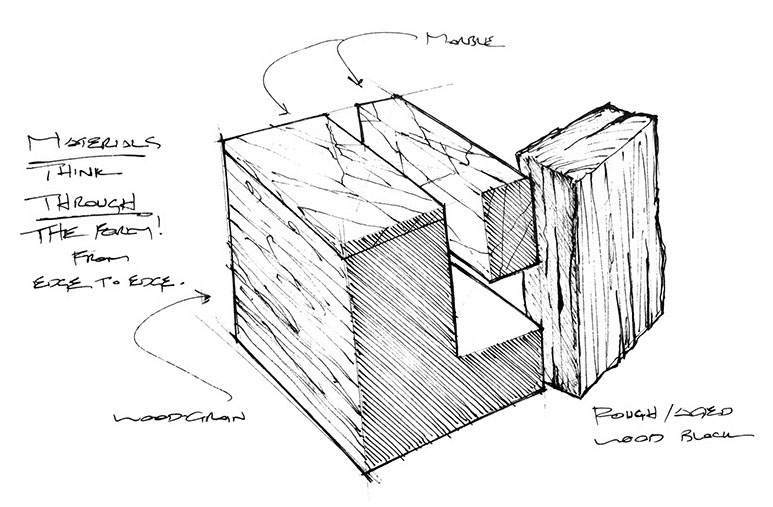
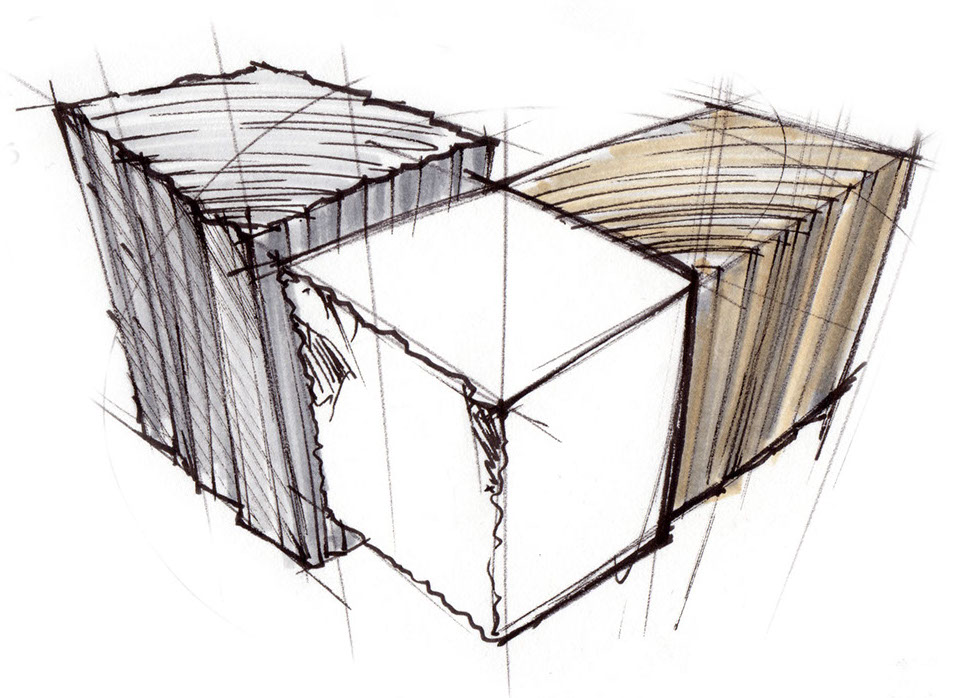
Wood surfaces can be smoothly finished, or aged and have considerable texture. Reinforce the degree of aged versus smooth with the profile edge as well as leading edges.
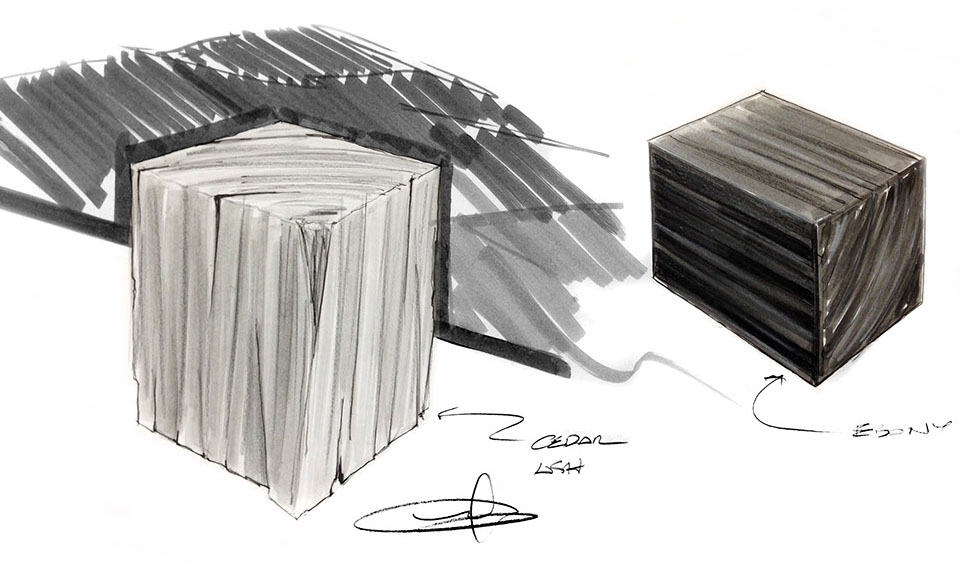
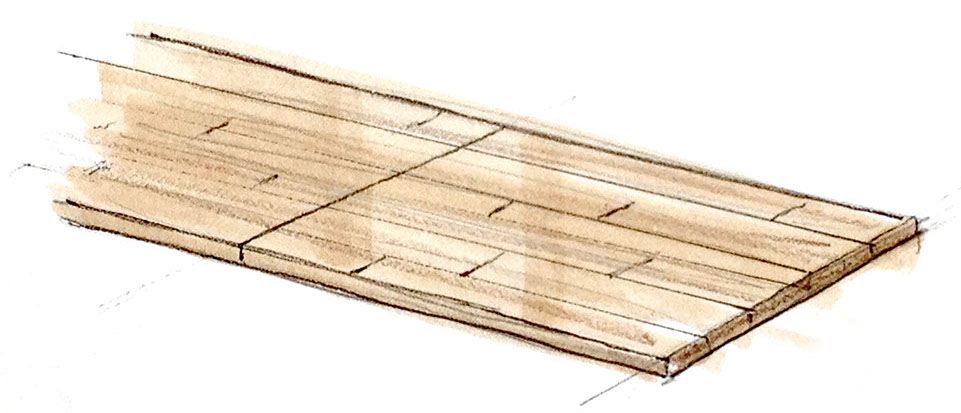
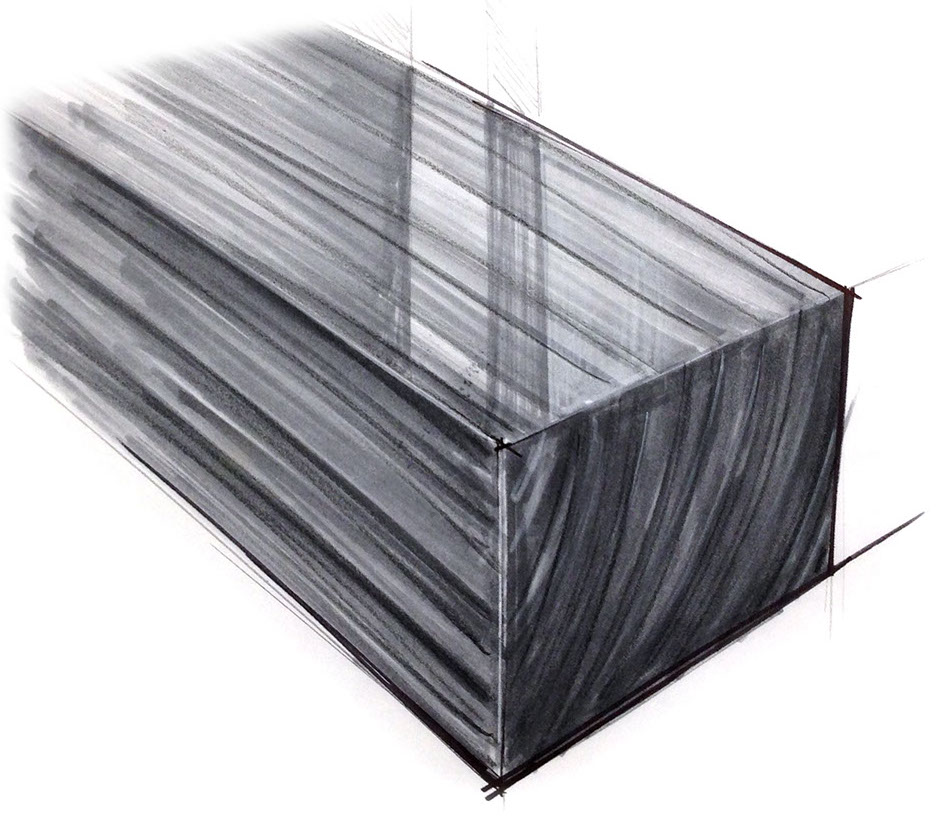
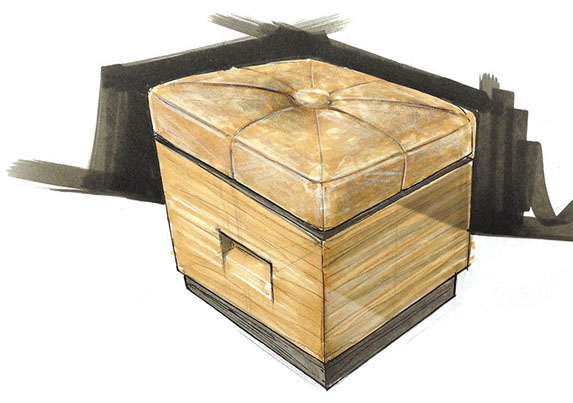
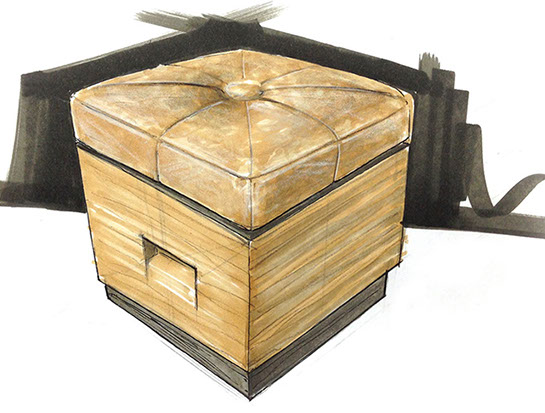
These examples also show that wood can come in a wide range of coloration, from honey blond values we might find with maple to the ash grey of aged cedar or deeper values in ebony wood and similarly deep wood stains. Remember to reinforce the plane contrast.
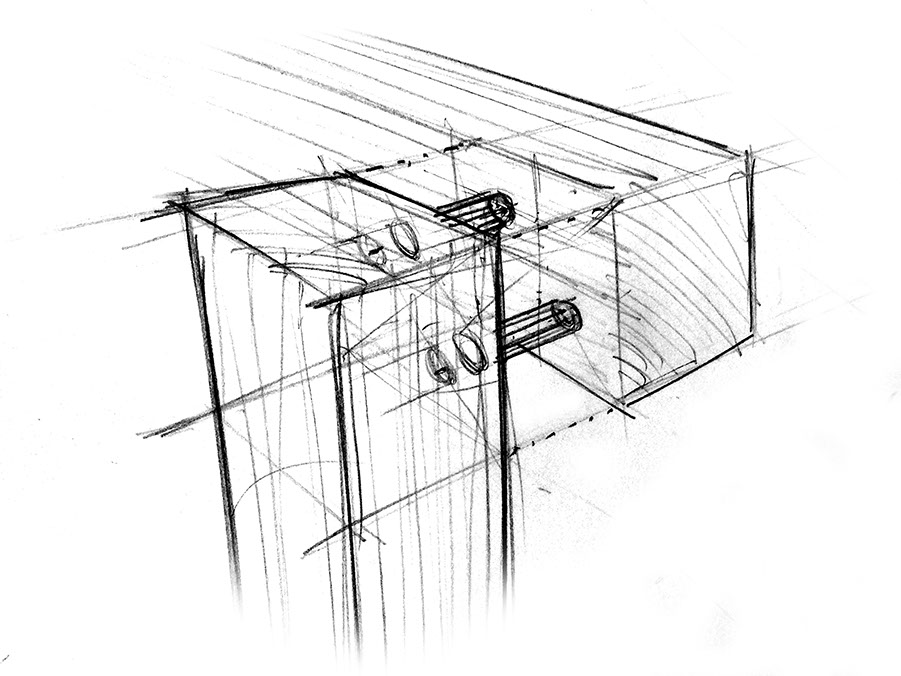
JOINERY DETAILS
Knowing a few basic wood joinery details can add a high level of believability to your sketching and rendering.
Below are some basics, but check out Japanese Joinery for some truly amazing wood craft.
This joint uses dowels
to create a strong connection
when combined with glue.
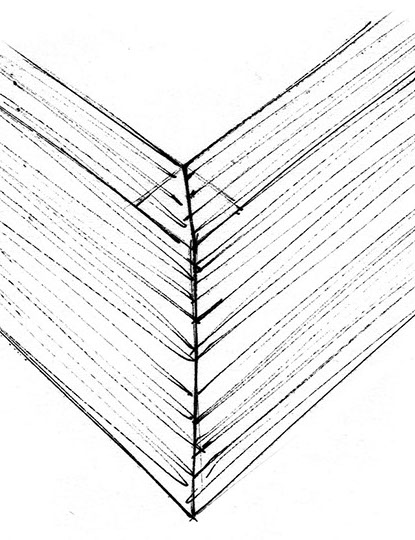
This is a mitre joint and also how wood laminates often appear. Notice the long grain of the wood from each plane meet at the edge.
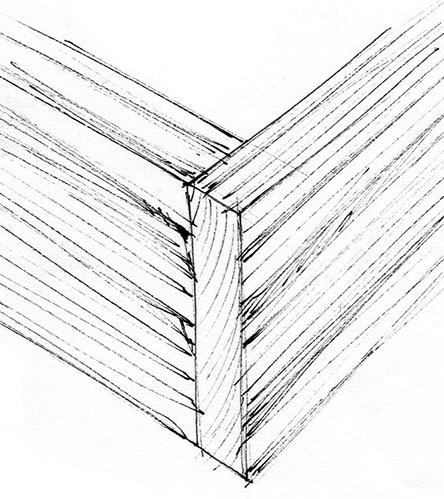
This illustration shows a a Butt joint. This method of joining wood is very weak on it's own and requires reinforcement; the dowel and peg method above, braid nails or the unique locking system pioneered by IKEA.
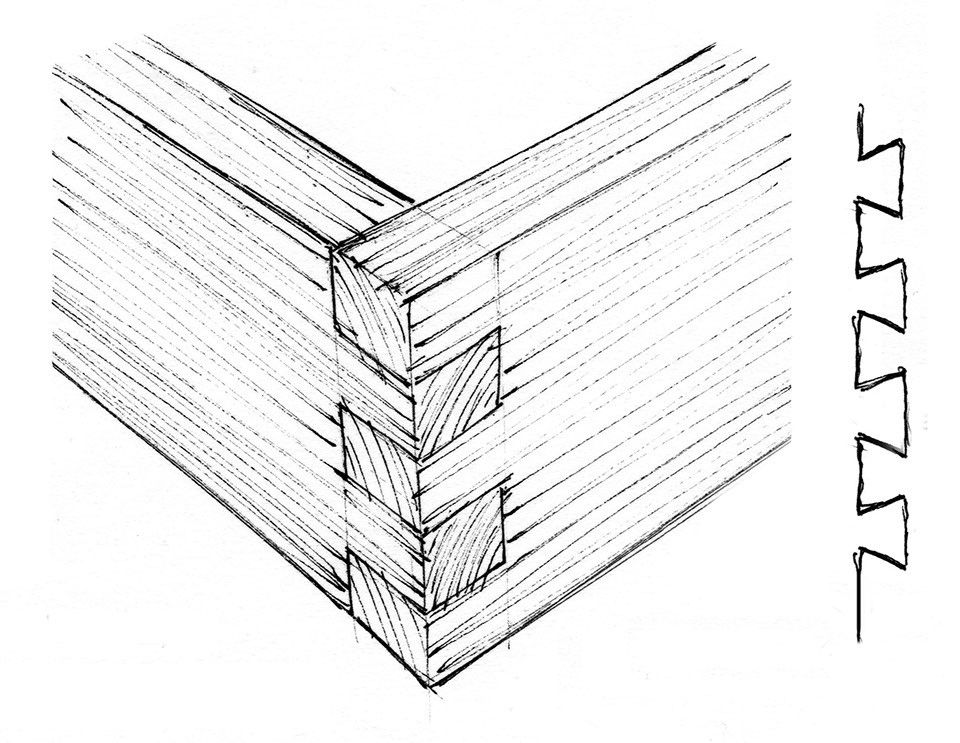
A Box Joint utilizes an overlapping pattern from each plank of wood, producing a very solid joint that will last a long time. Notice that you'll see the wood's end grain exposed a the ends in a staggered pattern.
Similar to the Box Joint, but stronger is the Dovetail Joint as diagrammed below.
* Estimate only. See instructor and calendar for specific due dates. Summer Session schedule is more compressed with one week equal to approximately two and half semester weeks.
CSULB | COTA | DEPARTMENT OF DESIGN | BIO

Questions, feedback, suggestions?
Email me with your recommendations.
©2020 Michael LaForte / Studio LaForte, All Rights Reserved. This site and all work shown here is purely for educational purposes only. Where ever possible student work has been used or original works by Michael LaForte.
Works by professionals found online or in publication are used as instructional aids in student understanding and growth and is credited everywhere possible.
